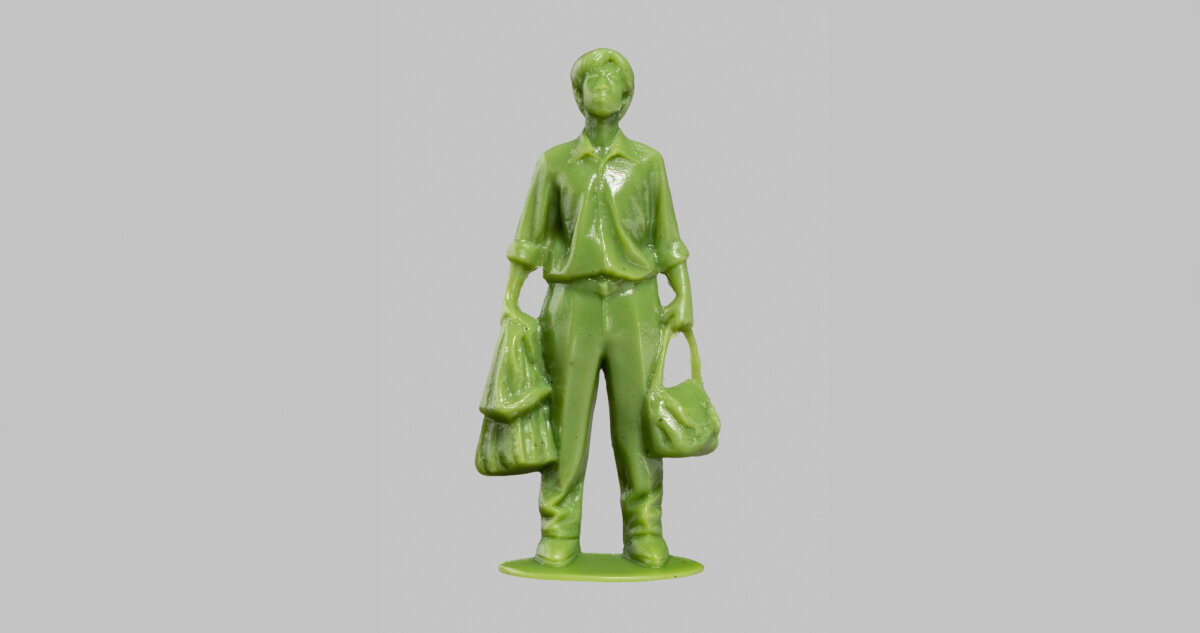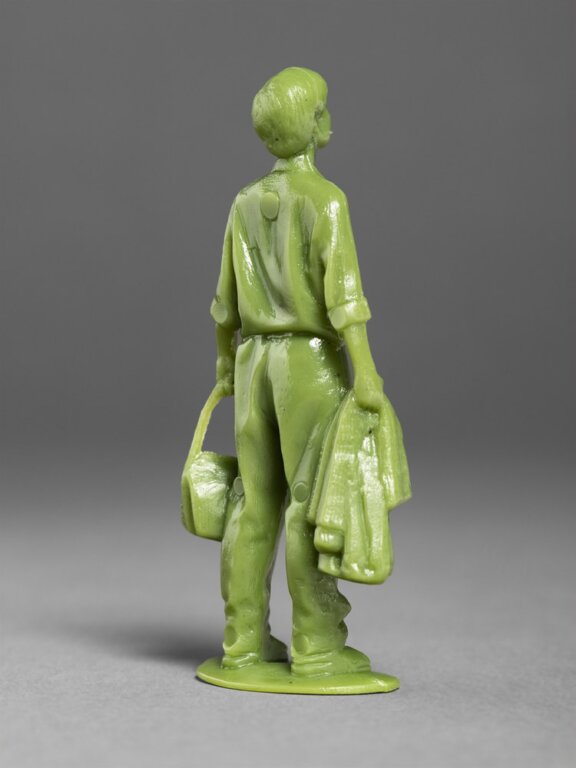The Spanish artist Fernando Sánchez Castillo is exhibiting in the Humboldt Lab small figures that depict the Tank Man, an icon of the history of democracy. In 1989, during the student protests on Tian’anmen Square, the young man stood in the way of a row of tanks.
A slim man in a white shirt, he holds a shopping bag in one hand and his overcoat in the other. Unprotected he stands in the way of a row of approaching tanks on Tian’anmen Square in Beijing. In 1989, photos and film recordings of this still not definitely identified activist known as the Tank Man circulated all over the world.
The iconic image of a single, peaceful protester holding up a column of tanks inspired the Spanish artist Fernando Sánchez Castillo. An army of his small jade-green Tank Man figures with their heads raised unflinchingly will be part of the exhibition in the Humboldt Lab.
Castillo has worked with the Tank Man motif for many years. He stages his little figures as pacifist armies – as in his 2015 Made in China exhibit for the Albertinum in Dresden. He had the figures made in China, purportedly as children’s toys. In addition to the miniatures Sánchez Castillo has made in the course of his engagement with the protester a statue over five metres tall.
Born in 1970 in Madrid, the visual artist is interested in issues of democracy, dictatorship, the power of the individual and the power of images. He translates snapshots of historic events into works of art in order to trigger debates on issues that continue to be relevant.
As in the Albertinum, the Tank Man figures in the Humboldt Lab, the Humboldt-Universität’s exhibition in the Humboldt Forum, do not serve as immobile permanent exhibits. Visitors are invited to note their thoughts about democracy and human rights on self-adhesive stickers. “Anyone who leaves a note can take away a figure in return,” says Dr Gorch Pieken, head curator of the exhibition. They can do so until the last of the 5,000 Tank Men has been removed from the display cabinet. Each figure stands for a demonstrator who was killed in the protests. The cabinet in which the figures are exhibited thus becomes a participating exhibit to which more and more ideas are affixed.

